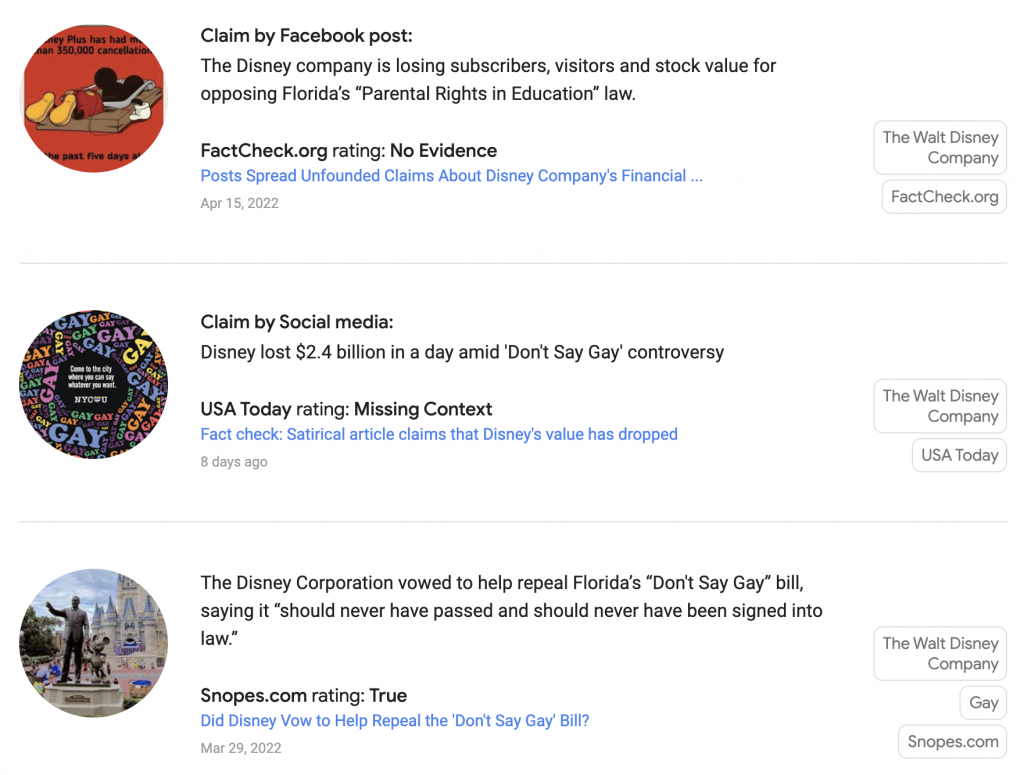As the internet continues to flood with misinformation and disinformation, the tricks of scammers and spammers and other unreputable folk/AI, our strategies must also evolve. There are myriad protocols for assessing the validity of online content, but our favorite among them is SIFT (The Four Moves).
An ode to the SIFT model
It is versatile enough for learners to apply it in any setting and it gets to skills that go beyond the info provided on the website’s About page. The SIFT protocol encourages us to consider our emotions (strong emotional reactions are a great indicator!) and to triangulate information. It also acknowledges the importance of nuance and complexity in the information we consume.
The SIFT model was developed by Mike Caulfield and is detailed on his website. There’s even a mini-course you can take to learn more about the protocol on Mike Caulfield’s website.

Google’s fact-checking features
Back in March, Google announced a set of new features, tools, and initiatives designed to address the misinformation flying at us from every direction. These features fit nicely into the SIFT protocol and can make the steps a little easier. Here are a few that we’re particularly pumped about. (You can read the full post on Google’s blog The Keyword.)
The highly cited label is a simple way to identify pages that others cite in their articles. You’ll find this label on Top Stories on mobile and the web. This is part of Google’s efforts to highlight “original reporting”.
For any search results, you can now use the About this result and More about this page. Just click the three stacked meatballs next to the search result to find these features. What can you learn from this feature?
- A source description that pulls from Wikipedia and the site itself (when available)
- A sense of what others have written about the site including context, reviews, and more to help you get a sense of how reputable the source is
- More about the topic such as top news or similar results from other sources.
The Fact Check Explorer aims to be Snopes on steroids. Just type in a fact, topic, or person and you’ll get a list of Claims, how they were made/shared, a rating about its validity, and a link to a related article. A sample result for a search on Florida’s Don’t Say Gay Bill.

We are seeing an increase in tools and features to help us make sense of and control the influx of (mis)information. Putting these tools into the hands of our learners, our colleagues, and anyone else in our sphere of influence will reduce the spread of misleading information. Couldn’t we all benefit from a little less nonsense and a lot more truth?
Cool. Let’s get to work.

ISTE Standards for Educators
Citizen 2.3.b. Establish a learning culture that promotes curiosity and critical examination of online resources and fosters digital literacy and media fluency.

